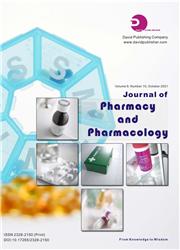The Imperative of Inter-Modal Transport System in Nigeria: A Case Study of Asaba and Onitsha Transportation System
引用次数: 0
Abstract
: Transport system in Nigeria is predominantly uni-modal as it is estimated that over ninety per cent of goods and passengers are transported by road. The over-reliance on road transport for the transportation of bulk of goods and people has contributed greatly to the deterioration of Nigeria’s roads and the attendant increase in road maintenance costs. Researches by scholars have revealed that a single means of transport cannot adequately serve the intra and inter-transport needs of the majority of people living in urban cities. Asaba and Onitsha located at the banks of river Niger have outlets for water-based transport services, which are yet to be fully developed and integrated with the dominant road transport system. Bulky goods that arrived by sea are best transported from the port through the waterways to inland ports. The Onitsha port, which was established in the 1980s has not been functioning and this makes road transport the only option for transportation of goods and people between the two cities. It is against this background, that this paper surveys the transport modes in the two cities and advocates the need for inter-modal transport modes that would ensure seamless movement of people and goods between the two cities and with other parts of the country. The paper submits that for the two cities to derive full benefits of the different transport modes, there is need for efficient inter-modal transport systems linking the two cities and regions in order to minimize the frequent chaotic traffic congestion on the Niger bridge. The optimal utilization of inter-modal transport modes would enable each transport mode to perform its distinctive roles which would lead to faster transportation of passengers and goods as well as ensure reduction in transport costs. The paper also proffers ways of achieving an efficient inter-modal transport system between Asaba and Onitsha and Nigeria at large.多式联运系统在尼日利亚的必要性:以Asaba和Onitsha运输系统为例
:尼日利亚的运输系统主要是多式联运,因为据估计,90%以上的货物和乘客是通过公路运输的。大量货物和人员的运输过度依赖公路运输,这在很大程度上导致了尼日利亚道路的恶化和随之而来的道路维护成本的增加。学者们的研究表明,单一的交通工具无法充分满足大多数城市居民的内部和内部交通需求。位于尼日尔河畔的阿萨巴和奥尼察有水上运输服务网点,这些服务尚未完全开发并与主要的道路运输系统整合。海运到达的散装货物最好通过水路从港口运到内陆港口。建立于20世纪80年代的奥尼察港一直没有运行,这使得公路运输成为两个城市之间货物和人员运输的唯一选择。正是在这种背景下,本文调查了这两个城市的交通方式,并主张需要多式联运方式,以确保两个城市之间以及与全国其他地区的人员和货物无缝流动。本文认为,为了使这两个城市充分受益于不同的交通方式,需要建立连接这两个市和地区的高效多式联运系统,以最大限度地减少尼日尔大桥上频繁出现的混乱交通拥堵。多式联运模式的最佳利用将使每种运输模式都能发挥其独特的作用,从而加快乘客和货物的运输,并确保降低运输成本。本文还提出了在阿萨巴和奥尼察以及整个尼日利亚之间实现高效多式联运系统的方法。
本文章由计算机程序翻译,如有差异,请以英文原文为准。
求助全文
约1分钟内获得全文
求助全文

 求助内容:
求助内容: 应助结果提醒方式:
应助结果提醒方式:


